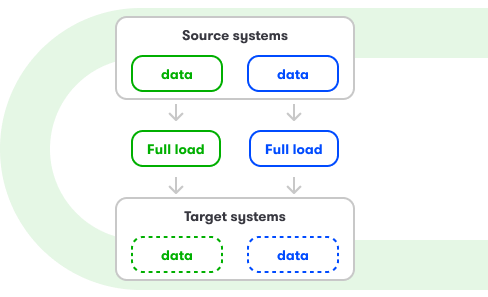Professional Data Integration Services for Modern Businesses
Integrating data from various sources is part of comprehensive data engineering services, which improves its quality, eliminates manual work, and enhances the accuracy of analytics.
Let’s talk
We empower leaders:










Benefits of Modern Data Integration Platforms
With data integration platforms, all data is combined into a centralized system, enhancing a company’s flexibility and responsiveness to business needs.

No data silos
Source integration breaks down barriers between departments, enabling consistent and integrated data access for users across the organization. By using advanced data integration software, teams can access, process, and analyze datasets, reducing errors and improving decision-making.

Quick access to data
Data integration solutions enable the efficient management of data flows, allowing the extraction and processing of datasets without manual intervention.
This eliminates inefficiencies, reduces costs, and minimizes human error. Centralized databases allow faster analytics, reporting, and easier access for users.

Better system integration
Consolidating data in one place ensures better information quality not only for people but also for company systems, whose performance largely depends on this data. This also facilitates smooth data migration, maintaining data integrity and ensuring business continuity during the process.

Higher quality data
Consistent data formats, no duplicates, or false data lead to greater precision in work. It also enables using data to streamline business processes, such as personalizing customer experiences.

Faster and more accurate insights
Integrating relevant data sources and formats accelerates analysis and increases the precision of insights. It supports the identification of threats and opportunities, and highlights areas for improvement, such as customer service.

Shorter time-to-market
Using data integration platforms and automated processes, businesses can speed up access to insights and accelerate their create, transform, load (ETL) pipelines. This allows companies to deliver products and services before the competition does.
Integrate all your data in one place
Let’s talkOur data integration philosophy
Data integration is not a one-time action, but a process that evolves as the business grows.
Data engineers play a crucial role in developing effective data solutions and ensuring seamless data integration. We educate clients about the importance of data integration tools, best practices, modern technologies, and measurable benefits, such as:
- methods tailored to specific sources (e.g., databases, APIs, corporate systems): batch, stream, full load, increment, etc.
- choosing the ELT or ETL strategy for customer data integration
- leveraging data integration software, whether ready-made or customized for client-specific needs, and selecting optimal tools
Data integration is the first step towards building trust in data and making accurate decisions that support short-term successes and long-term growth.

Discover our clients’ success stories

We helped Celsium build a data warehouse that reduced costs by PLN 180,000 per year
We integrated data from meters, SCADA, billing, and weather systems into a single data warehouse on Google Cloud Platform. We created advanced ETL processes, data quality control mechanisms, and dashboards in Tableau to support daily analysis of heat production and consumption.
The result? Meter failures detected in one day (previously one month), operational data updated three times a day, and significant savings thanks to heat source optimization and better demand balancing.

We built a modern data warehouse in GCP for PŚO
We helped Polski Światłowód Otwarty design and implement a scalable Data Lake architecture on Google Cloud Platform. We integrated 13 data sources, created automated ELT processes, access security, and a data model that serves as a single source of truth within the organization.
The result? Independence in reporting, rapid integration of new systems, readiness for future needs, and cost savings by eliminating on-premise infrastructure.

We helped AMS leverage data from DOOH media and maintain its position as a leader in outdoor advertising
We built a modern data ecosystem for AMS, a leader in OOH and DOOH advertising. We combined data from media, internal systems, Proxi.cloud, and CitiesAI to create a unified data warehouse in BigQuery with near real-time analysis.
The result? Data-driven targeting, campaign automation, better results for customers, and a stronger market position thanks to programmatic buying based on actual reach.

We helped Tutlo automate data integration and build a modern real-time ETL
In collaboration with the Tutlo team, we designed and implemented a data integration architecture based on serverless Google Cloud components. The system enables data synchronization from dozens of sources—including CRM—with full monitoring, CI/CD automation, and readiness for further scalability.
The result? A stable and flexible data ecosystem, ready for process automation, ML projects, and dynamic development of the educational platform.

We helped FunCraft forecast ROI and optimize UA budgets in the mobile gaming industry
We implemented a comprehensive BI solution for an American game studio, integrating data from Adjust, stores, and advertising platforms into the BigQuery warehouse. We built advanced dashboards in Looker Studio and predictive ROI models that enable accurate budget decisions—even with a long return on investment cycle.
The result? The FunCraft marketing team works faster, more efficiently, and with full control over their data.
Better data management leads to better business decisions
Solving Real Business Problems

Incorrect data and lack of integration
Without unified data systems, poor quality and integration errors lead to faulty analysis. A robust data integration solution and optimized data warehousing ensure accurate, actionable data.

Manual work reduces efficiency
Manually combining datasets wastes time and increases errors. Data integration software automates workflows, boosting efficiency.

Difficult access to information
Lack of data centralization creates conflicting sources of truth. A single integration platform ensures reliable, accessible databases for all users.

Unnecessary expenses
Without integration, you can’t eliminate certain systems that are completely unnecessary when optimizing.
Why Choose Data Integration with Alterdata?
End-to-end
We plan, design, and integrate data engineering tailored to your needs and business goals.
Our experts provide advice on the best solutions based on our experience.
A wide tech-stack
We use the latest and most efficient technologies from three leading cloud solution providers.
By leveraging the right tools, data architecture, and data mining techniques, we integrate multiple data sources into one seamless database—perfectly tailored to your needs.
Certified specialists
Our experts stay current with the latest trends and have hands-on experience across various industries and business models.
These skills enable them to select solutions that ensure success.
Solutions for success
We combine an understanding of business goals with data integration to deliver solutions that drive results.
Our priority is efficiency and delivering maximum value to our clients.
Tailored services
We don’t sell off-the-shelf products. We create tailored solutions that achieve your business goals.
Stakeholder feedback is a priority, ensuring all integrations – including custom data connectors, are effective, scalable, and aligned with your business processes.
Convenient collaboration
We assemble a dedicated team to support your data integration needs, offering flexible availability and cost-efficient service.
You only pay for the time used, making our integration services reliable and adaptable to your evolving requirements.
Integrate data from multiple sources
Methods of data source integration
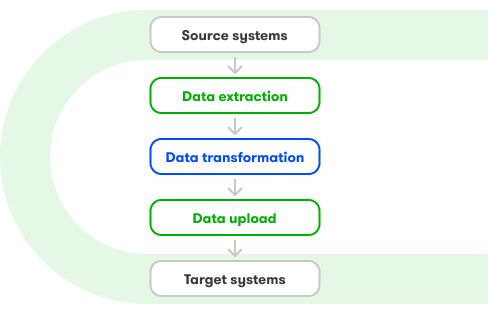
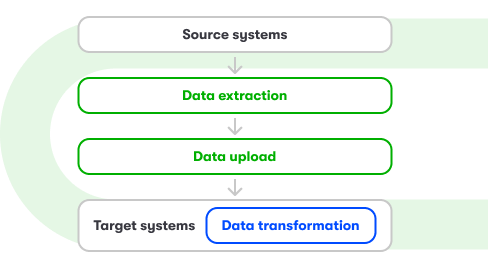
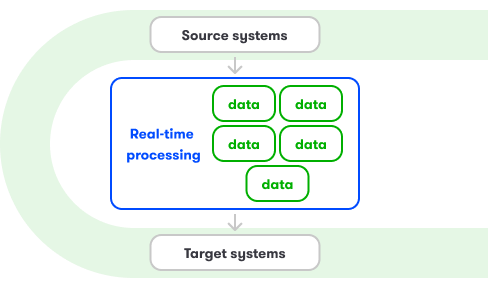
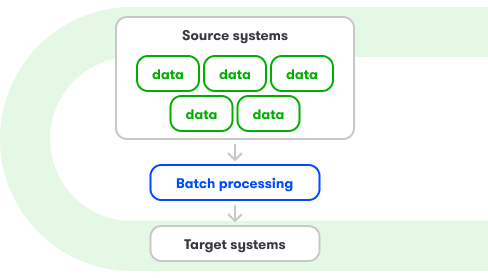
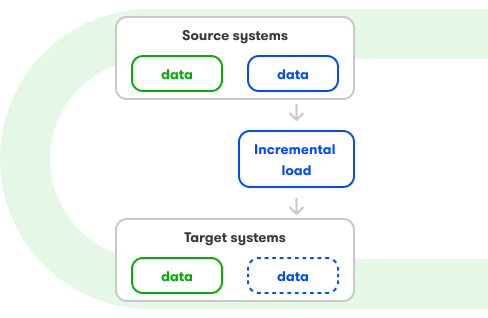
Tech stack: the foundation of
our work
Discover the tools and technologies that power the solutions created by Alterdata.

Google Cloud Storage enables data storage in the cloud and provides high performance, offering flexible management of large datasets. It ensures easy data access and supports advanced analytics.

Azure Data Lake Storage is a service for storing and analyzing structured and unstructured data in the cloud, created by Microsoft. Data Lake Storage is scalable and supports various data formats.

Amazon S3 is a cloud service for securely storing data with virtually unlimited scalability. It is efficient, ensures consistency, and provides easy access to data.

Databricks is a cloud-based analytics platform that combines data engineering, data analysis, machine learning, and predictive models. It processes large datasets with high efficiency.

Microsoft Fabric is an integrated analytics environment that combines various tools such as Power BI, Data Factory, and Synapse. The platform supports the entire data lifecycle, including integration, processing, analysis, and visualization of results.

Google BigLake is a service that combines the features of both data warehouses and data lakes, making it easier to manage data in various formats and locations. It also allows processing large datasets without the need to move them between systems.

Google Cloud Dataflow is a data processing service based on Apache Beam. It supports distributed data processing in real-time and advanced analytics.

Azure Data Factory is a cloud-based data integration service that automates data flows and orchestrates processing tasks. It enables seamless integration of data from both cloud and on-premises sources for processing within a single environment.

Apache Kafka processes real-time data streams and supports the management of large volumes of data from various sources. It enables the analysis of events immediately after they occur.

Pub/Sub is used for messaging between applications, real-time data stream processing, analysis, and message queue creation. It integrates well with microservices and event-driven architectures (EDA).
Google Cloud Run supports containerized applications in a scalable and automated way, optimizing costs and resources. It allows flexible and efficient management of cloud applications, reducing the workload.

Azure Functions is another serverless solution that runs code in response to events, eliminating the need for server management. Its other advantages include the ability to automate processes and integrate various services.

AWS Lambda is an event-driven, serverless Function as a Service (FaaS) that enables automatic execution of code in response to events. It allows running applications without server infrastructure.

Azure App Service is a cloud platform used for running web and mobile applications. It offers automatic resource scaling and integration with DevOps tools (e.g., GitHub, Azure DevOps).

Snowflake is a platform that enables the storage, processing, and analysis of large datasets in the cloud. It is easily scalable, efficient, and ensures consistency as well as easy access to data.

Amazon Redshift is a cloud data warehouse that enables fast processing and analysis of large datasets. Redshift also offers the creation of complex analyses and real-time data reporting.
BigQuery is a scalable data analysis platform from Google Cloud. It enables fast processing of large datasets, analytics, and advanced reporting. It simplifies data access through integration with various data sources.

Azure Synapse Analytics is a platform that combines data warehousing, big data processing, and real-time analytics. It enables complex analyses on large volumes of data.

Data Build Tool simplifies data transformation and modeling directly in databases. It allows creating complex structures, automating processes, and managing data models in SQL.

Dataform is part of the Google Cloud Platform, automating data transformation in BigQuery using SQL query language. It supports serverless data stream orchestration and enables collaborative work with data.
Pandas is a data structure and analytical tool library in Python. It is useful for data manipulation and analysis. Pandas is used particularly in statistics and machine learning.

PySpark is an API for Apache Spark that allows processing large amounts of data in a distributed environment, in real-time. This tool is easy to use and versatile in its functionality.

Looker Studio is a tool used for exploring and advanced data visualization from various sources, in the form of clear reports, charts, and interactive dashboards. It facilitates data sharing and supports simultaneous collaboration among multiple users, without the need for coding.

Tableau, an application from Salesforce, is a versatile tool for data analysis and visualization, ideal for those seeking intuitive solutions. It is valued for its visualizations of spatial and geographical data, quick trend identification, and data analysis accuracy.

Power BI, Microsoft’s Business Intelligence platform, efficiently transforms large volumes of data into clear, interactive dashboards and accessible reports. It easily integrates with various data sources and monitors KPIs in real-time.

Looker is a cloud-based Business Intelligence and data analytics platform that enables data exploration, sharing, and visualization while supporting decision-making processes. Looker also leverages machine learning to automate processes and generate predictions.
Terraform is an open-source tool that allows for infrastructure management as code, as well as the automatic creation and updating of cloud resources. It supports efficient infrastructure control, minimizes the risk of errors, and ensures transparency and repeatability of processes.

GCP Workflows automates workflows in the cloud and simplifies the management of processes connecting Google Cloud services. This tool saves time by avoiding the duplication of tasks, improves work quality by eliminating errors, and enables efficient resource management.

Apache Airflow manages workflows, enabling scheduling, monitoring, and automation of ETL processes and other analytical tasks. It also provides access to the status of completed and ongoing tasks, as well as insights into their execution logs.
Rundeck is an open-source automation tool that enables scheduling, managing, and executing tasks on servers. It allows for quick response to events and supports the optimization of administrative tasks.

Python is a programming language, also used for machine learning, with libraries dedicated to machine learning (e.g., TensorFlow and scikit-learn). It is used for creating and testing machine learning models.

BigQuery ML allows the creation of machine learning models directly within Google’s data warehouse using only SQL. It provides a fast time-to-market, is cost-effective, and enables rapid iterative work.

R is a programming language primarily used for statistical calculations, data analysis, and visualization, but it also has modules for training and testing machine learning models. It enables rapid prototyping and deployment of machine learning.

Vertex AI is used for deploying, testing, and managing machine learning models. It also includes pre-built models prepared and trained by Google, such as Gemini. Vertex AI also supports custom models from TensorFlow, PyTorch, and other popular frameworks.

Bartosz Szymański
Data Strategy and Customer Relations Director
Your data holds potential.
Ask us how to unlock it
Got a question about
Data Integration Services?
How long does data source integration take?

The time required for data integration depends on the complexity of the project, the number of corporate data sources, and the choice between using ready-made solutions or those developed specifically for the client. The benefits, such as faster access to data and greater trust in its accuracy, are usually visible within a few weeks after the work begins.
How will I know that the data source integration is successful, and which KPIs should be set?

Key KPIs in this context include increasing the reliability of ETL/ELT processes, reducing errors in reports, and improving the efficiency of operations that utilize integrated data. Together, we will select indicators specific to your company so that you can monitor how data integration translates into making more accurate decisions.
Is data source integration a solution only for large companies?

No, every organization that uses data from its systems should ensure its quality. Establishing a single source of truth and making data access easier for employees improves efficiency in both small and large companies, enabling them to make better business decisions more quickly.
Will new technologies be compatible with our technology?

Our integration solutions are designed with compatibility with both existing and future technologies in mind. We adapt to your requirements, ensuring flexibility and scalability.
Do I need any specific expertise in my organization for this service?

You don’t need to have specialized expertise within your organization. Our team of experts handles the entire implementation process, providing full support and training for your team.
Does an external analyst or data engineer have access to all the information in our company?

We ensure complete data security. Access to information is strictly controlled, and our experts only have access to the data necessary for project execution, adhering to the highest protection standards. We do not extract data; it is stored exclusively on the client’s side.
What if data quality issues arise in the future?

Our engineers provide ongoing support in monitoring and improving data quality. In case of issues, they deliver quick and effective solutions to maintain data integrity.
Is the company technologically objective and will it take our technology preferences into account?

Alterdata is technologically independent. Our recommendations are always based on your preferences and the best solutions available on the market, ensuring optimal effectiveness and alignment with your requirements. While we partner with many technology providers, we do not sell their products. This gives us maximum objectivity in selecting the most suitable technology to address your problem.
























